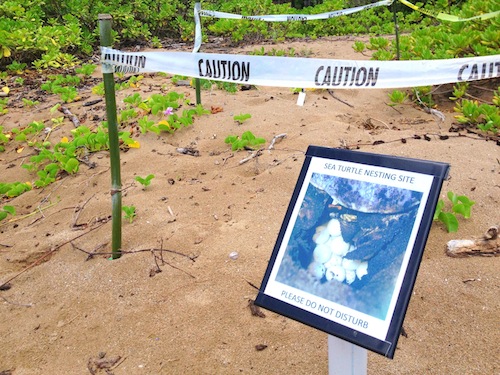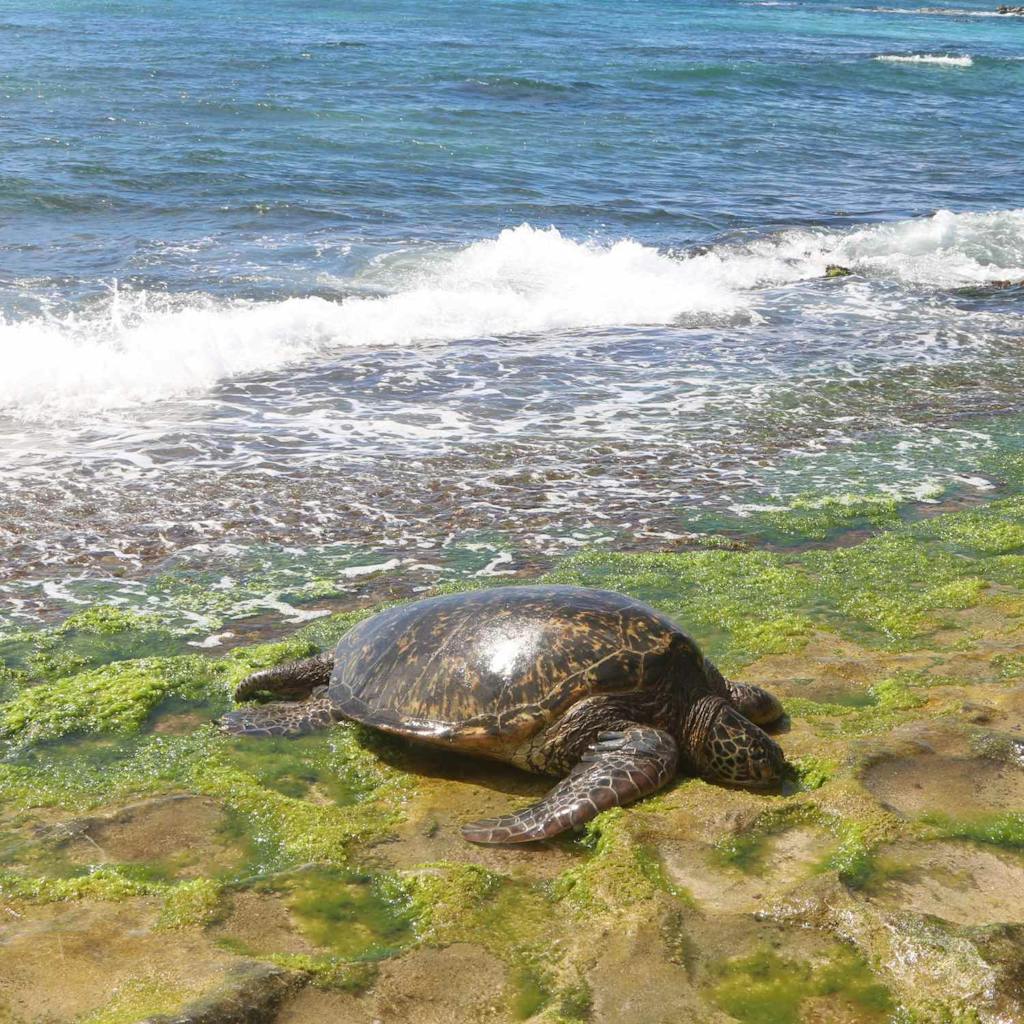Every once in a while, a news story showcases tourists mistreating local wildlife, especially monk seals and sea turtles in Hawaii.
Thankfully, these extreme stories are fairly rare. After all, most visitors truly want to respect Hawaii’s wildlife and appreciate it in a mindful way. So, what are the rules about interacting with sea turtles in Hawaii? Here’s how to appreciate these amazing creatures without breaking the law, causing harm, or disrespecting their environment!
Why It’s Important to Respect Hawaii’s Marine Life
Along with a few other species of sea turtles, the green sea turtle is listed as a threatened species under federal and state law. Hawaii’s sea life is a valuable part of the environment and local culture.
Sea turtles are called honu in Hawaii, and they’ve been a part of Hawaiian lore for as long as people have told stories in the islands. Honu have served as messengers, monsters, canoes, and foundations for entire islands.
If you’ve seen a sea turtle in the wild, you probably get it. There’s something mystical and awe-inspiring about these creatures. Sea turtles in Hawaii are large, peaceful, and expressive. Seeing one is a treasured memory for most tourists.
They also play an important part in the environment. They serve as hosts, predators, competition, and prey. Their diets help control populations of other organisms, and their migration habits contribute to balanced ecosystems.
Where to See Sea Turtles in Hawaii
Though honu are endangered, it’s definitely possible to see them during your Hawaii vacation. Top viewing spots include Laniakea Beach on Oahu and Ho‘okipa Beach on Maui’s north shore.
Look for sea turtles along the shoreline or in the break of small waves. You may also see them near the rocks of fish ponds.
What to Do When You See a Hawaiian Sea Turtle
Of course, if you see a sea turtle in the wild, you want to be sure and follow all rules and laws. This protects the turtles, the environment, and you – after all, you don’t want to encounter jail time or fines after encountering a turtle.

Stay at Least 10 Feet Away
Don’t go close to a sea turtle in Hawaii! Keep a distance of at least 10 feet, whether you’re admiring them on land or underwater.
You’ll actually want to keep an even farther distance if you see them while swimming. After all, a wave or breeze could carry you closer together, and you want to remain 10 feet apart no matter what. So give some extra space in case you drift near each other.
Don’t Check on Them – Even If You’re Worried
If a sea turtle looks sick, keep this in mind: Most turtles that haul out on the shoreline are just fine. They may lie very still, as if they are not breathing, but that’s normal.
Please keep your distance; do not try to get close to the animal. They need to be allowed to rest undisturbed.
If you see an obvious sign of injury, such as an open wound or entanglement in rope or net, please call the NOAA hotline at 1-888-256-9840 and/or report it online here.
Take Photos!
You want proof that you saw these incredible animals, so feel free to take photos of the sea turtles. Just keep a proper distance and don’t use flash. Also, don’t go into a “keep-out” area or dangerous spot to get a good vantage point. You’re not trying to make it into National Geographic, so accept the angle you’re at and get a few pictures to keep as a memory.

Keep Your Hawaii Sea Turtle Viewing Brief
Limit your sea turtle viewing time to a few minutes. You wouldn’t want anyone standing over you while you relaxed on the sand, so don’t hang around the turtles too long, either. Admire them from a distance, get a couple of photos (while being respectful), chat with a volunteer if one’s available, and then move on to other beach adventures.
Report Offenders
Nobody likes to be a rat, but sea turtles can’t speak for themselves. If you see someone blatantly harming a sea turtle, report them by calling 1-888-256-9840. Of course, if someone appears to be inching a bit too close, you can remind them of the rules before involving the authorities – some people may not know. But some people do completely disregard common decency and local laws by harming or bothering sea turtles in Hawaii, and reporting them is the best way to stop it.
Planning a Hawaii Vacation with Sea Turtles
If you want to see sea turtles up close and be sure you’re not endangering them, just book a visit to Sea Life Park through Hawaii Aloha Travel.
You’ll enjoy deep discounts off general admission, enjoy transportation from your hotel, and have the opportunity to spend the day at a fun and educational marine park!
When it comes to sea turtles in Hawaii, caution is extremely important — although their numbers have grown, their survival still depends on how well we humans interact with them!




